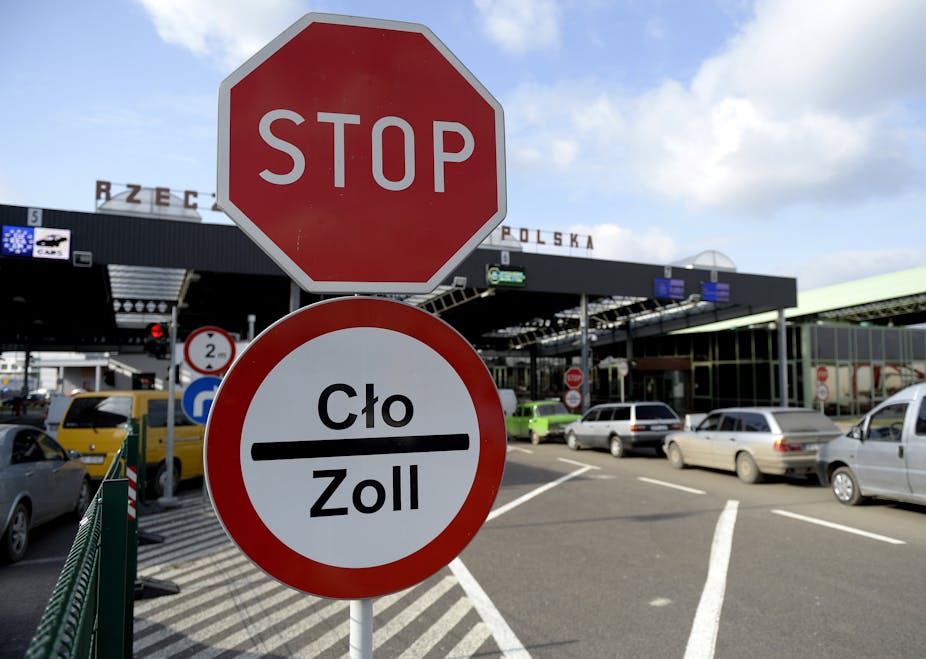As the world waits to hear what turn the Ukraine crisis takes next, it is wise for business leaders to stop and think about the questions raised by this unexpected clash of great powers. Some will worry this heralds the start of a new Cold War, others will hope our interconnected world will guarantee peace. But there is another, fundamental issue that events in Ukraine have highlighted. That is the problem of national borders.
It is a critical question for so many reasons. If national boundaries no longer represent the unified interests of the people living inside them, then do they become an anachronism, an artifact from past centuries? The answer can help us to see which direction the world could move in the coming decades. And it might be a huge mistake to assume that a future world looks just as it does now, especially when organisations consider their future long-term strategies.
Newspapers have been full of analyses that detail diverging historic allegiances in the Ukraine, some of which divide the country into pro-European and pro-Russian zones. It is true that historic allegiances and grudges have their role to play in reshaping the world, but there are more forces at work than just allegiances and grudges that could, jointly or separately, deliver a sharp upset in our world.
The problem is that we now face a confluence of forces that could precipitate a global shake-up. These forces include technology, inequality, the faltering legitimacy of national leaders, dissatisfaction with the “Washington Consensus”, a breakdown in the functioning of global institutions and even the spectre of regional food and water shortages. All of these forces are important, but we will single out here three that probably deserve special comment. We can start with technology.
Technology can divide
We often tend to think of technology as a positive force for change that can unite the world. But there is an alternative perspective that views technology as a potentially destabilising force. There are three issues, relating to technology, that we need to consider. The first is the obvious lesson from the Arab Spring, which is that technology empowers the individual and erodes the power of the nation state. The second is the potentially less obvious viewpoint that instead of encouraging unity, technology can encourage division, breaking up established cultures and replacing them with “traces and fragments”.
But there is another, a third issue that we need to think about when it comes to technology, and that is the disruption that could be caused by the implementation of the next wave. Will next-generation technologies be used to create jobs or to destroy jobs? This next wave of change could hit the middle classes – the group within society that is traditionally seen as the catalyst for change.
We then have the whole growing issue of the legitimacy of national leaders. In short, national leaders and their institutions are facing a crisis of credibility and are failing to keep pace with the rapidly changing needs and expectations of their citizens – a problem that has driven unrest in both emerging and advanced economies alike.
New spheres of influence
The final force leads us to focus on the Washington Consensus, or the rules of the world crafted by the world’s most powerful nation, which, until the global financial crisis, was of course the US. Global transitions, the shifts of power away from the old, once all-powerful nations to new ambitious players, bring into question the acceptability of established rules crafted by the declining powers. New players may well wish to craft their own new rules, but until they have reached a position of dominance it is dangerous for them to attempt to directly change the global rule book. A far easier path is to create their own zones of influence, within which they can start the process of writing new rules – which is what we could be seeing now in the Ukraine Crisis.
This unusual confluence of the 21st century points to a major shake-up in the world map. Preparing long-term business plans, using projections based on the world as a network of economically interlinked states as it currently stands, could be at the least, somewhat misleading. Businesses should consider an alternative – “a world of zones” – each of which demands a completely different strategic approach.
But before you rush away and grab your world atlases to see how national boundaries could move backwards or forwards, there are a couple of important points to make.
The first point is that the issue of shifting borders affects both “advanced” and “emerging” nations alike. All are exposed to technology, legitimacy and the perceived effectiveness of the old rules. The second point is another direct lesson from the current crisis in Ukraine. Shifts in one part of the world can act as a catalyst for divisions and change elsewhere – the reported potential splits in the West in respect of a response strategy to protect Ukraine act as an example.
The final point takes us back to technology. Our minds should not just rest upon geographic regrouping at all; there will be virtual alliances of interests to consider as well in the coming decades.

